LAKE HAVASU EXCHANGE
The Landscape along Mohave Counties Western Boarder was when
the PARKER DAM was built in 1934. The Colorado River was flooded
up stream for many miles, forming a huge lake. The Mohave tribe
had a name for the lake that they saw as "Blue-Green" or LAKE HAVASU!
the PARKER DAM was built in 1934. The Colorado River was flooded
up stream for many miles, forming a huge lake. The Mohave tribe
had a name for the lake that they saw as "Blue-Green" or LAKE HAVASU!
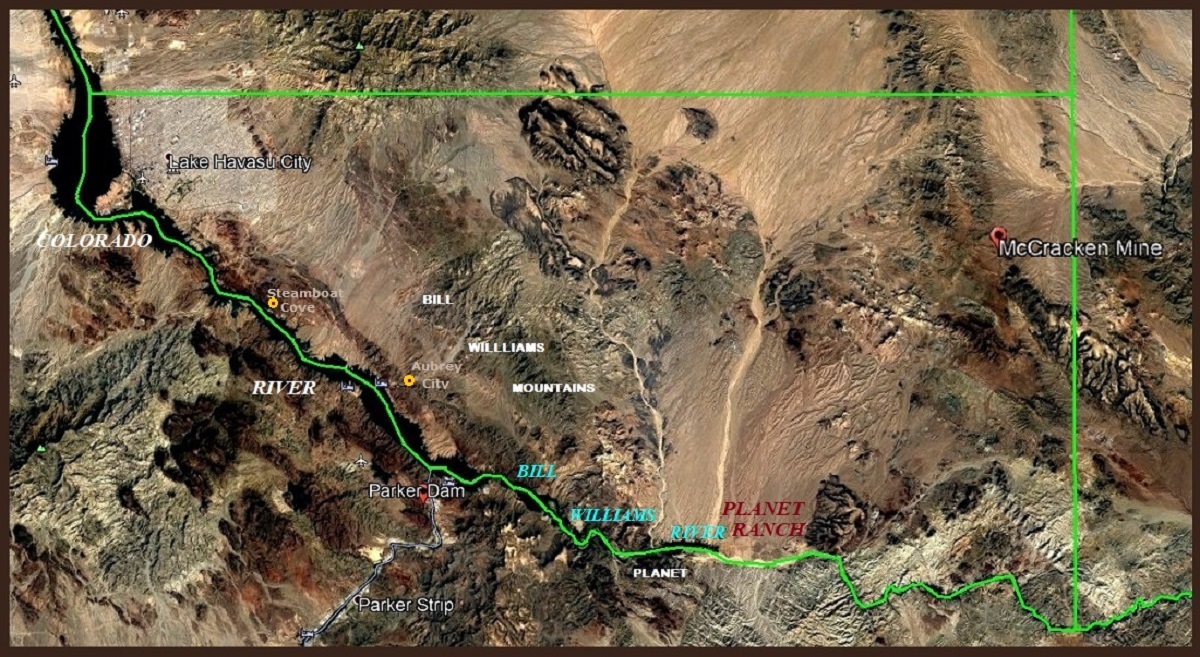
Before the river was flooded
STEAMBOATS
served the communities
STEAMBOATS
served the communities
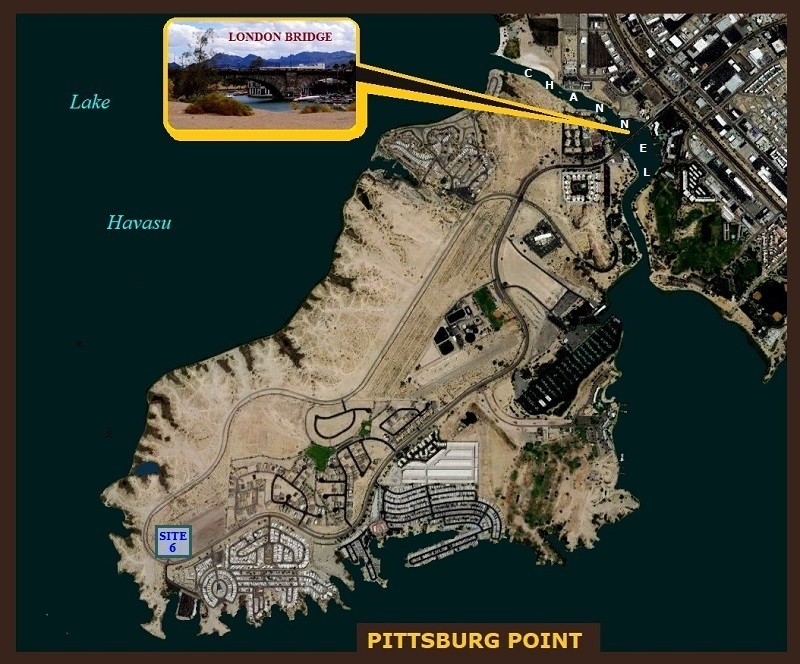
along the river from
Mexico to
the Grand Canyon.
Mexico to
the Grand Canyon.


EXCHANGE MAP
SITE 6
In 1944, the site was remodeled & improved for use as a rest & convalescent camp for Kingman AAF.
It depicted "Kingman #6" as an auxiliary airfield. The installation was declared surplus in 1945, and the field was reused as a civil airport. According to Arizona100, "When the war ended, the entire facility was declared surplus and Vic & Corinne Spratt moved from Needles to manage Site Six as a fishing resort.
It depicted "Kingman #6" as an auxiliary airfield. The installation was declared surplus in 1945, and the field was reused as a civil airport. According to Arizona100, "When the war ended, the entire facility was declared surplus and Vic & Corinne Spratt moved from Needles to manage Site Six as a fishing resort.
In 1942 the military acquired 1,030 acres of Public Land to build an emergency landing field for Kingman AAF's Yucca Aerial Gunnery Range. The emergency field was established in 1943 & consisted of 2 runways. No facilities were associated with the landing field other than the runways, there were no lighting, hangars, shops, gasoline, oil, communications, or radio facilities.
This location soon was used as an R&R location (rest and rehabilitation) for Air Force personnel; with fishing, swimming, boating, skeet shooting, and hiking readily available for soldiers on leave. B-17 bombers landed weekly, dropping off a new load of personnel and picking up the previous week's personnel to be returned to their bases.
This location soon was used as an R&R location (rest and rehabilitation) for Air Force personnel; with fishing, swimming, boating, skeet shooting, and hiking readily available for soldiers on leave. B-17 bombers landed weekly, dropping off a new load of personnel and picking up the previous week's personnel to be returned to their bases.
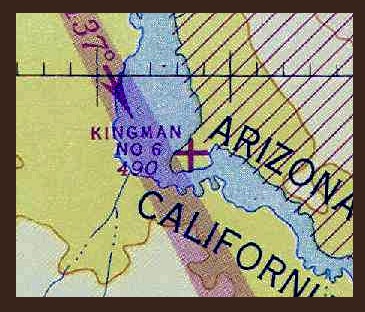
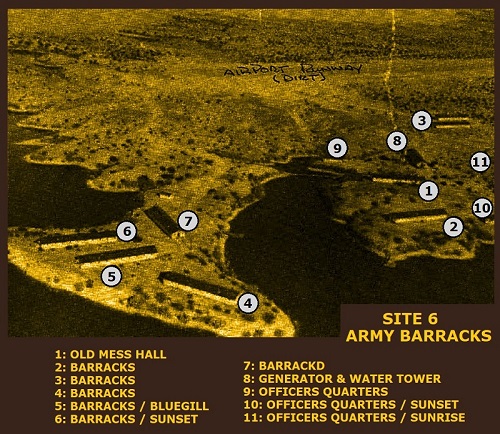


PITTSBURG POINT
But their attorney had to prove to the military prior ownership of the former Public Land. Fortunately, war surplus aircraft were cheap in the 1950s, so guests could fly into what was now called Havasu Airpark, with former army barracks turned into living quarters, grocery, restaurant and bar.

PLANET DIGGINGS

The town of Planet was known as a travelers' stopping place,
and had a post office from 1902 to 1921.
The geology of the Planet area is ancient, estimated to be Precambrian where
3.8 billion-year-old bedrock is found, being made up mostly of pinkish gneiss and absorbed limestone and amphibolite, which contained hematite-copper. Gold and the copper were discovered in the early The Planet area began producing ore around 1868,
making it likely the first copper mine in Arizona.
Prospectors received trouble from Apaches until 1874, when they were placed on reserves.
Smelting and bullion production, assaying at about 5% copper, began in the 1880s.
By 1884, the mine had sent more than 6,000 tons of high-quality copper to San Francisco. Transporting freight 28 miles to Planet cost $10 to $18 a ton.
There was for a while limited access to Planet, a stage ran to Bouse
(21.5 miles to the south) three times a week. From Bill Williams Heritage
and had a post office from 1902 to 1921.
The geology of the Planet area is ancient, estimated to be Precambrian where
3.8 billion-year-old bedrock is found, being made up mostly of pinkish gneiss and absorbed limestone and amphibolite, which contained hematite-copper. Gold and the copper were discovered in the early The Planet area began producing ore around 1868,
making it likely the first copper mine in Arizona.
Prospectors received trouble from Apaches until 1874, when they were placed on reserves.
Smelting and bullion production, assaying at about 5% copper, began in the 1880s.
By 1884, the mine had sent more than 6,000 tons of high-quality copper to San Francisco. Transporting freight 28 miles to Planet cost $10 to $18 a ton.
There was for a while limited access to Planet, a stage ran to Bouse
(21.5 miles to the south) three times a week. From Bill Williams Heritage
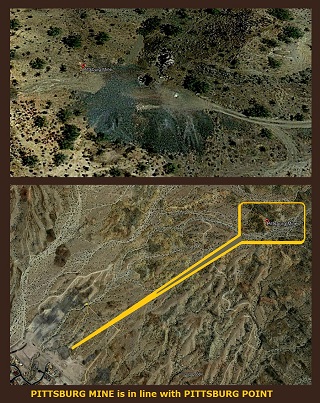
PITTSBURG POINT is named for
PITTSBURG MINE, the most
resent earth changing endevor
below the mountains.
FOR CENTURIES;
All types of ROCK & DIRT
have been moving down
a path that puts
a large amount right into the
COLORADO RIVER.
PITTSBURG MINE, the most
resent earth changing endevor
below the mountains.
FOR CENTURIES;
All types of ROCK & DIRT
have been moving down
a path that puts
a large amount right into the
COLORADO RIVER.

McCULLOUGH Trumpets in.
NOTE: On this day of writing, my health tured bad,
I will not be able to do any more detail, :(
I will just quickly transfer the McCullough NOTES.
I will not be able to do any more detail, :(
I will just quickly transfer the McCullough NOTES.
In 1946, ownership of the camp at Site Six passed from federal hands. Vic and Corrine Spratt left the bustle of Needles, California, to operate the place as a hunting and fishing camp. Visitors who remember say the new owners left the original menu pretty much intact. But fishing was good and the Spratts made a modest income from the crude resort.
Robert P. McCulloch roared into this bucolic scene in the early 1960s and changed it forever. He picked Lake Havasu as a place to test the outboard motors his company manufactured, and then went a step further. He bought a bloc of land next to the lake and decided to put a city there: Lake Havasu City, where people could work at his factories and enjoy fishing and water sports, as well. From the mid-'60s to the late 70s, McCulloch's own fleet of aging airliners brought prospects from as far away as the East Coast to see
and buy Lake Havasu City.
While McCulloch was staking out lots in the desert for sale, Interior Secretary Stuart Udall began looking at the lake, as well. In 1964, the Department of the Interior published a study of the land along the Colorado River. The 400-page document made one thing clear: Usable riverside land was too rare and valuable for private development. It had to be held for public use "in perpetuity."
Udall's study found that most riverside land was just too rough and rocky for camping and launching boats. But one area stood out as a great place for public use to be maintained: the land around newly planned Lake Havasu City,
including Pittsburg Point.
With control of Pittsburg Point, McCulloch bought that outdated bridge from the City of London in 1968 and transported it, stone by stone, to Lake Havasu City. The channel was gouged to create The Island. The novelty bridge quickly paid for itself, attracting a new wave of lot buyers and guaranteeing the town's commercial success.
The Island languished for nearly two decades. A few businesses leased land for "approved" uses: a marina, a hotel, a camping facility. McCulloch himself bought 100 acres in The Island's center for future development. Things might have remained quiet to this day if it hadn't been for the Central Arizona Project.
McCulloch's salesmen pounced on this policy with feral glee. They promised their bleached prospects, still dizzy from plane rides out of Chicago or Kansas City, that the area fronting the lake would be maintained in its natural state forever "as a federal park." Those early lot buyers remember the promises, and they can produce tattered brochures from their scrapbooks as proof. According to these old tracts, what is now The Island and the land around it was never supposed to be the site of homes.
By this time, McCulloch had long since passed from the scene (when he died in 1977, almost all of the 17,000 lots in his dream town had been sold) and control of his land interests in Lake Havasu City had devolved to MCO Corporation,
the Fountain Hills subsidiary of Houston-based conglomerate MAXXAM. And MCO, which still managed The Island as "master concessionaire," had other ideas about building houses. SOURCES: (WIKIPEDIA1) & (WIKIPEDIA 2)

AUTHOR
Go To EXCHANGE Page

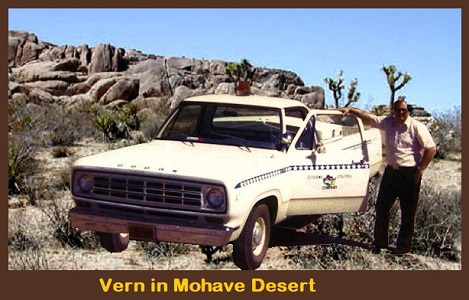
Christnas in Kingman 1977
I enjoyed the desert. :)


CLICK MY WINDOW
YOU WILL SEE I AM PROBABLY WATCHING CROWS LAND AT THE TOP OF OUR TALL PINES. :)
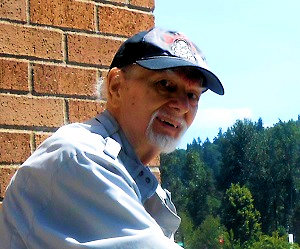
YUP, this
me a few weeks
ago. I'm a lot
worse todar :(
CLIKE MY
NAME TO
SEE WERE
I WORK.
me a few weeks
ago. I'm a lot
worse todar :(
CLIKE MY
NAME TO
SEE WERE
I WORK.
I MIGHT be able to make more
web pages soon
BUT look at my best page
uo at the top,
STEAMBOATS on the Colorado.
web pages soon
BUT look at my best page
uo at the top,
STEAMBOATS on the Colorado.








